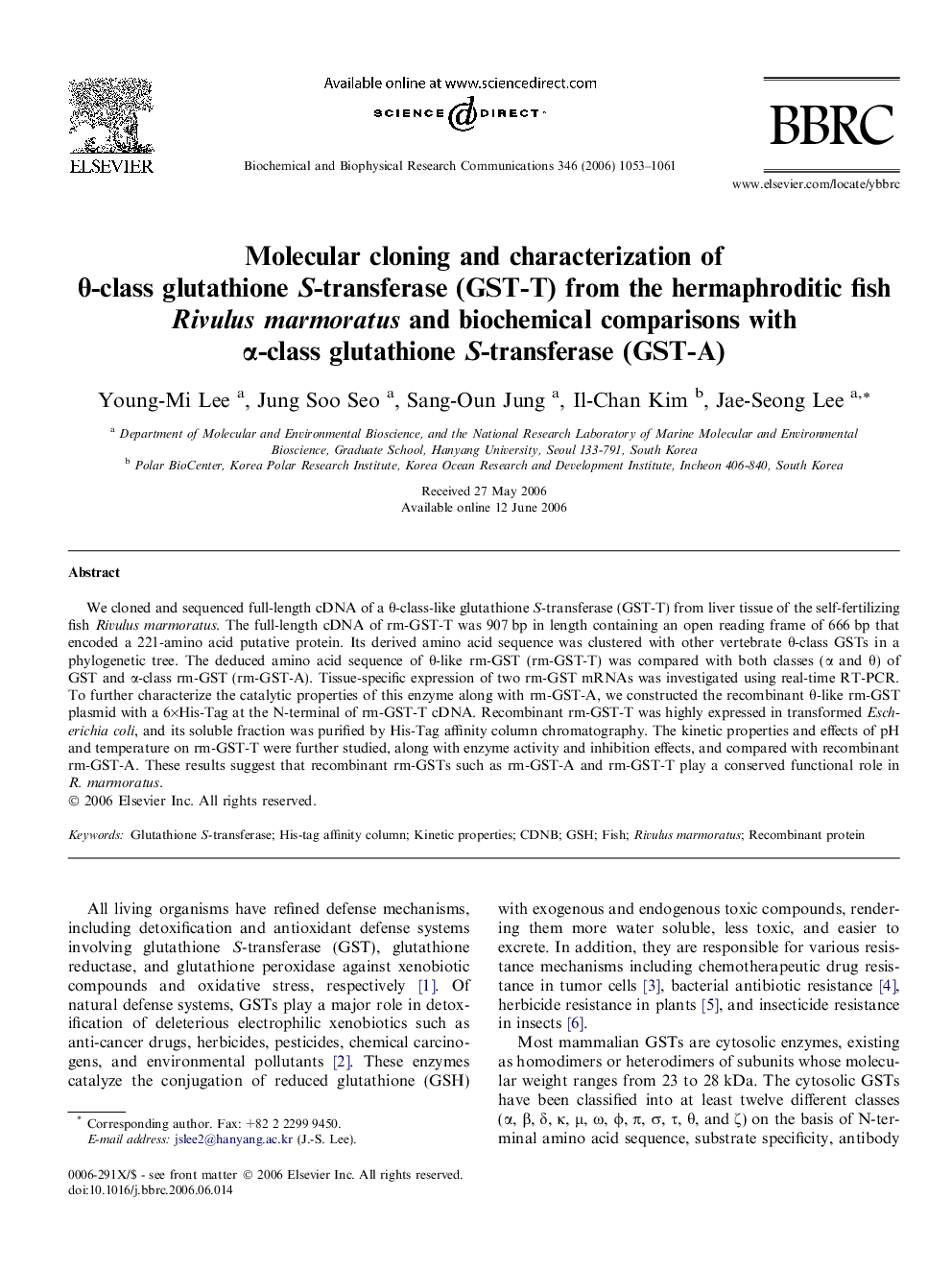| Article ID | Journal | Published Year | Pages | File Type |
|---|---|---|---|---|
| 1939492 | Biochemical and Biophysical Research Communications | 2006 | 9 Pages |
We cloned and sequenced full-length cDNA of a θ-class-like glutathione S-transferase (GST-T) from liver tissue of the self-fertilizing fish Rivulus marmoratus. The full-length cDNA of rm-GST-T was 907 bp in length containing an open reading frame of 666 bp that encoded a 221-amino acid putative protein. Its derived amino acid sequence was clustered with other vertebrate θ-class GSTs in a phylogenetic tree. The deduced amino acid sequence of θ-like rm-GST (rm-GST-T) was compared with both classes (α and θ) of GST and α-class rm-GST (rm-GST-A). Tissue-specific expression of two rm-GST mRNAs was investigated using real-time RT-PCR. To further characterize the catalytic properties of this enzyme along with rm-GST-A, we constructed the recombinant θ-like rm-GST plasmid with a 6×His-Tag at the N-terminal of rm-GST-T cDNA. Recombinant rm-GST-T was highly expressed in transformed Escherichia coli, and its soluble fraction was purified by His-Tag affinity column chromatography. The kinetic properties and effects of pH and temperature on rm-GST-T were further studied, along with enzyme activity and inhibition effects, and compared with recombinant rm-GST-A. These results suggest that recombinant rm-GSTs such as rm-GST-A and rm-GST-T play a conserved functional role in R. marmoratus.
